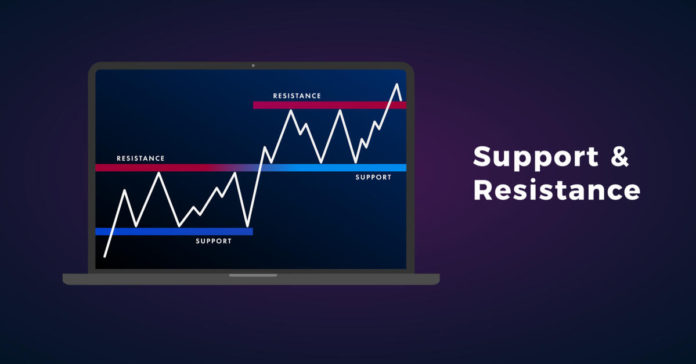For correct and safe trading, it is necessary to know certain concepts by which you can determine the movement of prices. Trading with support and resistance is such a phenomenon.
The support level is the value from which the price is unfolded from top to bottom. This level is a unique support and does not give the indicators to fall very low.
The level of resistance is an indicator from which the price is reversed (bottom-up). It can be said that this value keeps prices low and serves as a deterrent.
In practice, such a strict classification of levels is not necessary. It is enough to understand that the level is a point where the price can change direction with some probability. According to the classics of technical analysis, at this point two scenarios are possible: a breakdown or a rebound. When one of them occurs, it gives a further impulse to the direction of movement.
How do levels appear on the chart?
Levels are a benchmark in situations where fundamental factors do not allow a particular price value to be identified as a starting point. They are most active in short-term trade, when within random (on the scale of fundamental estimates) fluctuations it is necessary to distinguish prices that are currently «too low» and attractive for buying, or «too high»and when you get there, you better think about selling.
In other words, the levels exist because market participants are guided by them when making trade decisions.
Levels can be formed both naturally, as a result of imbalance of supply and demand at certain points, and artificially, by the appearance of large bids. In general, all types of important levels can be used to trade to open and close positions, as well as to determine the price for the stop request.
Extreme levels
The simplest and most common way to determine a level is to pass it through an extreme. At this point, purchases fade and traders begin to fix positions (in case of a maximum) or vice versa, after the sale, buyers activate, finding the price attractive for entry (in case of a minimum).
Additional features of the level of importance include:
- the level passes through two or more extremes, which are at about the same price;
- the extreme through which the level is conducted is the local maximum/minimum on the senior timeframe;
- the extreme has undergone an increased volume and/or this extreme has been formed as a result of an important event.
The increased volume means that the movement of the price has been stopped by the big players who are interested in the turn and are ready to keep this level.
Opening/closing levels of the trading day
In addition to extreme values, the levels of opening and closing of the trading day work well. It applies more to the intraday dynamics of the instrument.












